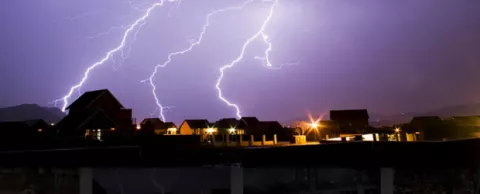
Microgrids have several valuable applications. They provide electric service on a small scale for rural communities and developing countries, self-sufficient power sources for telecom towers, additional and emergency power for critical infrastructure like hospitals and more. But for a variety of reasons the technology isn't now in widespread use.
The news release below outlines an innovative approach by Council Lead Partner Schneider Electric and Aquion Energy and Azimuth Energy to realize the promise of microgrids to not only provide stand-alone power when needed, but to enhance energy efficiency and energy network management for the overall grid. If your city is concerned about a reliable, sustainable energy future, projects like this one may eventually provide the solutions you're looking for. — Doug Peeples
Aquion Energy, Schneider Electric, and Azimuth Energy Announce AC/DC Hybrid Nanogrid at the Illinois Institute of Technology
PITTSBURGH, PA--(Marketwired - Sep 12, 2016) - Aquion Energy, Inc., the manufacturer of Aqueous Hybrid Ion (AHI™) batteries and energy storage systems, Schneider Electric, the global specialist in energy management and automation, and Azimuth Energy, a solar-energy and energy-efficiency engineering and construction company, today announced completion of an innovative AC/DC nanogrid at the Illinois Institute of Technology's (IIT) Keating Sports Center. The nanogrid, which was designed and installed by Azimuth Energy, is a combined solar plus energy storage system that uses Aquion Aspen batteries for storage and Schneider power control electronics for energy management.
"This is the future of distributed generation, where isolated loads powered by renewables combined with energy storage can stand alone and operate without the grid," said Tim Poor, chief commercial officer of Aquion Energy. "Our safe and sustainable Aspen batteries are the optimal choice for long-duration storage and deep daily cycling, from nanogrids like this one at IIT to microgrids, island communities, and other nanogrids such as telecom base stations."
The IIT nanogrid is unique because it supports both alternating current (AC) and direct current (DC) loads. During the day, the solar array directly powers the highly efficient DC LED lighting systems and AC loads, while simultaneously charging the batteries. Any excess solar energy can be exported to the grid. In the event of a grid outage, the batteries and solar panels deliver energy to the system 24/7.
"Schneider Electric has always been at the forefront of researching energy management technologies and solutions for microgrids. We were a proud partner in this innovative project, ready to demonstrate the benefits of the flexibility and intelligence of our Conext XW+ family of products. It supports multi-mode operation to create a perfect test-bed for validating a true hybrid system with mixed energy sources and loads on DC and AC distribution," said Xavier Datin, vice president of solar off-grid and residential at Schneider Electric.
"This project will greatly increase energy efficiency, as well as provide critical backup power in case of an outage," said Dr. Mohammad Shahidehpour, Ph.D, IIT's Director of the Robert W. Galvin Center for Electricity Innovation. "In case of emergencies, we will be able to separate the Keating Center from the rest of IIT's grid, while maintaining full power to the facility. We're very pleased with the benefits derived from this project and the innovative technologies that have been implemented."
Although the Keating nanogrid has a connection to the campus microgrid, it is engineered to operate autonomously using only solar and batteries, as an islanded off-grid system. The nanogrid is a demonstration of how a solar plus storage system can provide resilient electricity for critical building loads during power outages, such as police stations and hospitals. In the case of an outage, any building with a nanogrid could continue to be powered by its own sustainable, self-generated electricity. The nanogrid also allows building operators to respond to their power demand and control how and when they use power from the microgrid -- and ultimately from the utility.
"This project was a fun challenge that stretched all our knowledge of microgrids," said Marc Lopata, president of Azimuth Energy. "The Keating nanogrid will provide a reliable and versatile platform for future research by the IIT Galvin Center under the direction of Dr. Shahidehpour. We had less than our expected share of surprises, and I attribute that to the functionality, quality control, and support from Aquion and Schneider."
Aquion's Aspen batteries are clean, sustainable, and long-lasting, can operate at high ambient temperatures, and do not degrade from partial state of charge cycling. Aspen batteries have a unique and environmentally friendly electrochemical design and are the first and only batteries in the world to be Cradle to Cradle Certified™.
The Schneider power electronics that were provided include the Conext XW+ 6848 Hybrid Inverter and the Conext XW MPPT80-600 Charge Controller.
For more on distributed generation and microgrids...
Energy is essential for cities. Obviously, they can't function without it. If your city is considering where to begin a smart city transformation — or add other elements to an initiative already underway — preparing for a reliable, sustainable energy future that incorporates renewables would be wise strategy. The Energy chapter of the Smart Cities Readiness Guide addresses relevant technologies, best practices, planning and the benefits of smart energy networks for citizens, businesses and the local economy.
Doug Peeples is a Portland, Oregon-based writer specializing in technology and energy. Follow @smartccouncil on Twitter.



